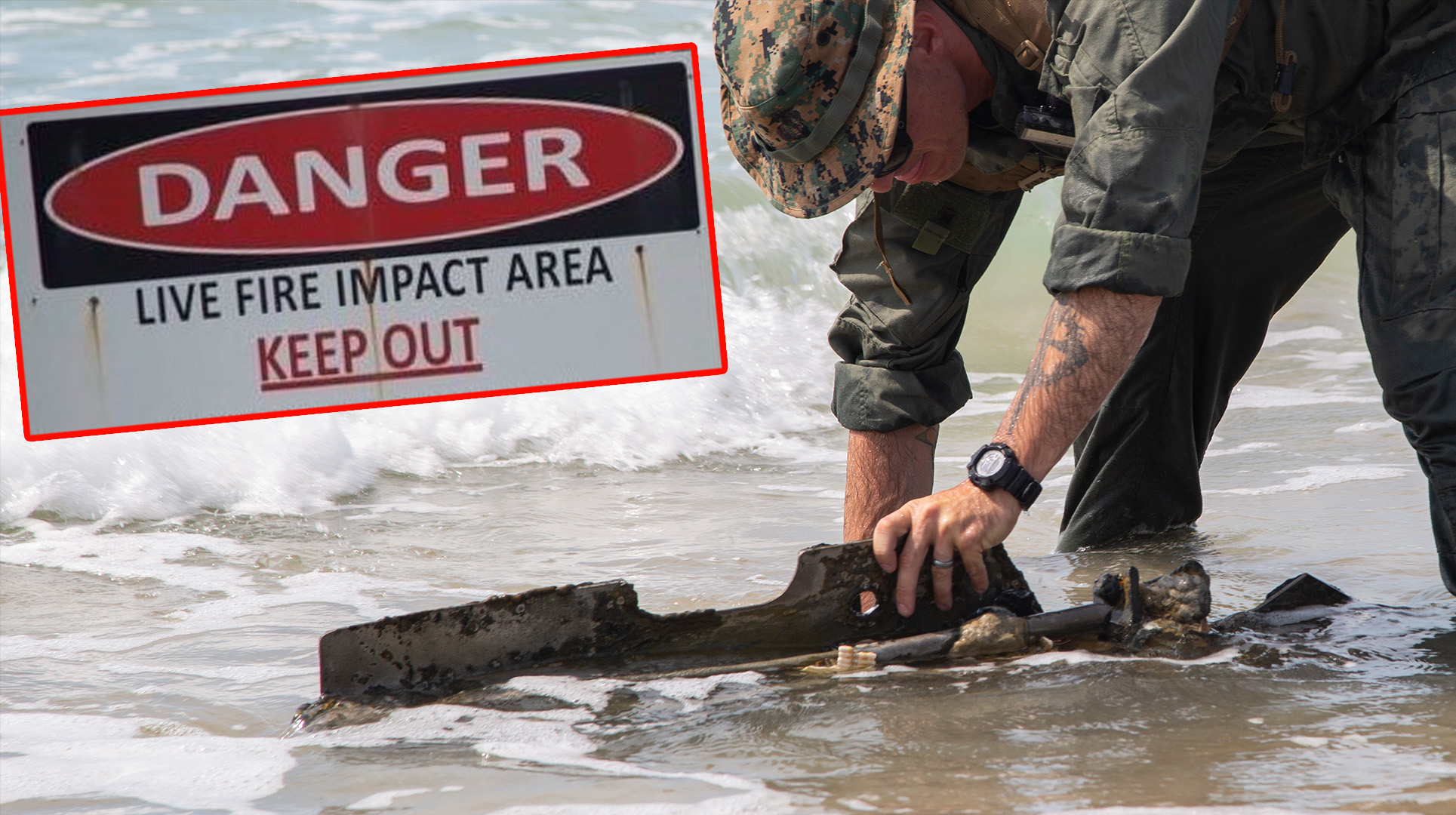

When summertime boaters come to the North Carolina coast, they hope to find a spot that looks just like Browns Island: a rugged barrier island with white sand beaches unspoiled by even a single footprint.
But there’s a reason Browns Island’s 3-mile beach is so undisturbed: it’s covered in bombs.
For over 50 years, Browns Island — which is part of Camp LeJeune, the sprawling Marine Corps base on North Carolina’s coast — was a bombing range for aircraft, artillery, and even ships practicing off-shore gunnery. Unexploded ordnance remains scattered across the island, often just beneath its sandy surface or in the shallow waters around it, says Nick Klaus, the head range official for Camp LeJeune.
Subscribe to Task & Purpose Today. Get the latest military news and culture in your inbox daily.
Klaus oversees over 100 ranges across Camp LeJeune, which host about 200 training events nearly every day of the year. But, Klaus says, Browns Island is a unique headache for base officials.
“Every day I get recreational boaters in the summer who pull up there,” Klaus told Task & Purpose. “They’re not only trespassing on federal property, which is illegal, but they’re putting themselves and their families in danger.”
Authorities on LeJeune posted about the island on the base’s Facebook page last month and the Marine Corps has been known to take journalists to the island to spread the word on its dangers.

As a hazard, Browns Island is relatively unique across the military. Most military training ranges are set safely within the fenced-off borders of bases, inaccessible to the public. The few isolated island ranges that aren’t on a larger base, like those on Catalina Island in California and the now-closed complex on the island of Vieques in Puerto Rico, are relatively remote and hard to get to, limiting the chance that unknowing tourists might stumble onto them.
But Browns Island is just a few miles from two tourist-heavy North Carolina beach towns, Emerald Island to the north and Topsail Beach to the south. Wrightsville Beach outside Wilmington and the Outer Banks are not much farther. As a result, hundreds of often-inexperienced boaters troll past Browns Island every summer weekend on the Atlantic Intracoastal Waterway or on its beachy Atlantic side.
“Boaters come cruising up the Intracoastal and in this part of North Carolina, if you see an open beach, you pull in there,” Klaus said. “You beach your boat, you jump your kids out, you start having a picnic. The next boat comes by and says ‘that looks like a good spot’ and they pull off and pretty soon you’ve got 60 people having a party out on the island.”
Access to the island is so hazardous, Klaus said, that even he can’t visit it without a Marine Explosive Ordnance Disposal team to clear the way.
“Every time they go out, they find something, especially after storms,” said Klaus.
The dunes and sandbars that makeup North Carolina’s barrier islands are constantly shifting against the Atlantic’s harsh weather. On Browns, storms and tides regularly uncover shells and bombs move them, and re-bury them in the shifting sands, especially during hurricane season.
In 2018, Hurricane Florence unearthed four 250-pound bombs. At least one, when detonated by EOD, left a crater more than 20-foot wide.
As a result, not only are landings restricted but “bottom disturbing” activities, like lowering an anchor or dragging fishing gear, are also prohibited in the narrow channels around the island.
Dozens of no-nonsense warning signs are posted in every waterway that approaches the island and at every anchorable spot, warning of both the danger of explosives and a $5,000 fine for those caught.
No civilians have been hurt on the island during Klaus’ eight years at LeJeune, he said, but there have been close calls.
Three years ago, EOD Marines were called to an off-base marina after a civilian boater brought home an unexploded rocket they’d found on Browns Island.
“This thing was sensitive enough they did not want to move it,” Klaus said. “They had to sandbag it, take it to a corner of the parking lot and blow it in place.”
The latest on Task & Purpose
- Marine veteran killed by Russian missile strike on restaurant in Ukraine
- Vet whose service dog died after violent arrest sues police
- Retired Navy officer calls for creating ‘Area 52’ amid China, Russia concerns
- Air Force Pararescue teams are looking for a new boat to rescue astronauts
- Pentagon will no longer support movies, TV shows censored by China
